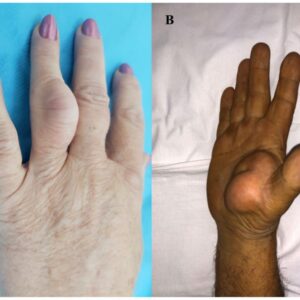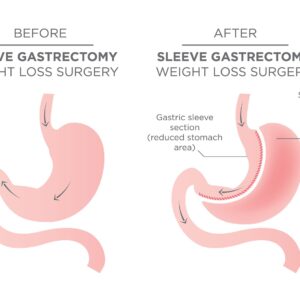Description
Familiarity with treatment
Peritoneal vaginoplasty is a surgical technique used to create a neovagina by utilizing the peritoneal lining, which is the inner lining of the abdominal cavity. It is primarily performed in transgender women or individuals with vaginal agenesis (absence of a vagina).
The procedure involves the following steps:
Anesthesia: The patient is placed under general anesthesia to ensure comfort and pain control during the surgery.
Incision: A small incision is made in the lower abdomen to access the peritoneal lining.
Dissection: The peritoneal lining is carefully dissected and separated from the surrounding tissues.
Graft Preparation: The peritoneal lining is then prepared to be used as a graft for the creation of the neovagina.
Vaginal Canal Creation: A space is created between the rectum and the urethra/prostate, where the peritoneal graft will be placed to form the vaginal canal.
Graft Placement: The peritoneal graft is carefully positioned and sutured in place to create the lining of the neovagina.
Closure: The incisions are closed using sutures or surgical staples.
Peritoneal vaginoplasty is a newer approach to vaginoplasty, and it is based on a gynecological procedure called the Davydov Procedure. The Davydov Procedure uses the peritoneal lining for the creation of a neovagina in women born without a vaginal canal. Peritoneal vaginoplasty has shown potential benefits such as self-lubrication, more vaginal depth, and potentially requiring less dilation.
Who is it suitable for?
Based on the search results, peritoneal vaginoplasty is suitable for the following individuals:
Transgender women: Peritoneal vaginoplasty is commonly performed in transgender women who are seeking gender-affirming genital surgery.
Individuals with vaginal agenesis: Peritoneal vaginoplasty can be an option for individuals born without a vaginal canal, such as those with Mayer-Rokitansky-Küster-Hauser (MRKH) syndrome.
Who is it not suitable for?
Based on the search results, peritoneal vaginoplasty may not be suitable for the following individuals:
Very overweight individuals: The presence of visceral fat, which covers the peritoneal lining, may make the surgery more challenging or less effective for very overweight individuals 1.
Individuals who desire a deeper or more spacious vagina: The depth of the vagina created using peritoneal vaginoplasty may be limited to around 6 inches (14 cm), which may not meet the expectations of individuals who desire a deeper vaginal canal 1.
Advantages
Peritoneal vaginoplasty offers several potential advantages, although it’s important to note that there is a lack of long-term data on outcomes for patients who have undergone this procedure. The advantages mentioned in the search results include:
Potential for self-lubrication: Peritoneal vaginoplasty has the potential to provide self-lubrication, which can enhance sexual experiences and reduce the need for artificial lubricants.
Possibility of more vaginal depth: Peritoneal vaginoplasty may offer the potential for greater vaginal depth compared to other techniques, such as penile inversion vaginoplasty.
Potentially requiring less dilation: Some sources suggest that peritoneal vaginoplasty may require less frequent or intensive dilation compared to other procedures. However, it’s important to note that individual experiences may vary.
Lower risk compared to colonic vaginoplasty: Peritoneal vaginoplasty is considered to have a lower risk profile compared to colonic vaginoplasty, which involves using a segment of the colon for vaginal reconstruction.
Complications
Peritoneal vaginoplasty, like any surgical procedure, carries potential risks and complications. The search results provide some insights into the complications associated with peritoneal vaginoplasty:
Complications related to the procedure: The search results mention that peritoneal vaginoplasty procedures can be complicated and time-consuming, and they may result in complications. However, specific details about these complications are not provided in the snippets.
Risk of rectovaginal fistula: There is a risk of rectovaginal fistula with peritoneal vaginoplasty, as well as with other types of vaginoplasty. A rectovaginal fistula is a hole that forms between the rectum and the vagina. It is usually treatable with surgery.
Limited long-term data on outcomes: One of the challenges associated with peritoneal vaginoplasty is the lack of long-term data on outcomes for patients who have undergone this procedure. This lack of data makes it difficult to fully assess the potential risks and complications.
preoperative care
Preoperative care for peritoneal vaginoplasty typically involves several aspects to ensure the best possible outcomes. While the search results provide some information, it’s important to consult with a healthcare professional or specialist who can provide personalized advice based on your specific needs. Here are some general preoperative care considerations mentioned in the search results:
Mental health support: It is common for individuals undergoing peritoneal vaginoplasty to be required to have letters of recommendation from mental health professionals. These letters may need to specify the procedure being referred for and should be obtained within a certain timeframe.
Overall good health: Being in good overall health is typically a requirement for peritoneal vaginoplasty. This may involve ensuring that you do not have any underlying health conditions that could increase the risks associated with surgery.
Smoking cessation: Smoking and nicotine use can increase the risk of complications during and after surgery. It is often recommended to stop smoking and avoid nicotine products for a specified period before and after the surgery.
Perioperative assistance: It is important to have a support system in place, whether it be friends, family, or hired help, to assist you during the perioperative period. This can include helping with daily activities and providing emotional support.
Hair removal: Some sources mention the need for hair removal in the perineal area prior to peritoneal vaginoplasty. It is recommended to follow specific guidelines provided by your healthcare professional regarding hair removal.
Postoperative care
Postoperative care for peritoneal vaginoplasty is crucial to ensure proper healing and minimize complications. While the search results provide limited information, here are some general considerations for postoperative care:
Follow your surgeon’s instructions: It is essential to carefully follow the postoperative instructions provided by your surgeon. These instructions may include wound care, medication management, and activity restrictions.
Wound care: Proper wound care is important to prevent infection and promote healing. Your surgeon will provide specific instructions on how to clean and care for the surgical site. This may involve gentle cleansing, applying prescribed ointments or dressings, and keeping the area clean and dry.
Pain management: Your surgeon may prescribe pain medication to manage any discomfort or pain following the surgery. It’s important to take the medication as directed and report any severe or persistent pain to your healthcare provider.
Dilation: Dilation is a crucial part of postoperative care for peritoneal vaginoplasty. Your surgeon will provide instructions on how and when to perform dilation exercises. Dilation helps maintain the depth and width of the neovagina and prevents the formation of scar tissue.
Follow-up appointments: Regular follow-up appointments with your surgeon are important to monitor your healing progress and address any concerns or complications that may arise. These appointments allow your surgeon to assess the surgical site and make any necessary adjustments to your care plan.
Emotional support: Gender-affirming surgeries can have emotional implications, and it’s important to have a support system in place. This can include friends, family, or support groups who can provide emotional support during your recovery process.






Reviews
There are no reviews yet.